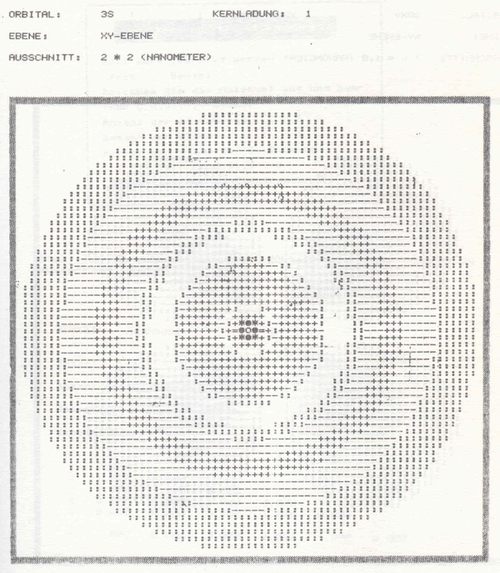Virtualisation
3. Virtualisation in teaching science

Virtualisation from the 1980s: character-based display of an atomic orbital (source: Kappenberg, 1988, p. 195)
The most spectacular results of virtualisation are related to learning about the microworld. Even though now we are able to more or less take a picture of molecules using a scanning tunnel microscope, using models is still extremely important. In chemical and biological modelling, you can usually display your models using the Chime (http://www.symyx.com/) plug-in most typically used with Java based Jmol and VRML (Virtual Reality Markup Language).


Measuring bonding angle on a Jmol model
Using VRML, you can create 3D, interactive structures called worlds. This technology is primarily used to visualise molecules, but there have been models built that display instruments and equipment.
An additional option is to build 3D environments like a chemical laboratory. This solution is very costly and only a few countries have attempted to use it primarily as part of remote learning (Dalgarno, Bishop, Adlong, Bedgood Jr., 2009).
Virtual teaching environments (e.g. Second Life) offer an increasing number of opportunities to make information available to students that is otherwise physically inaccessible and hard to learn.
More examples: